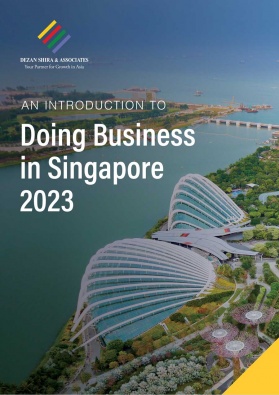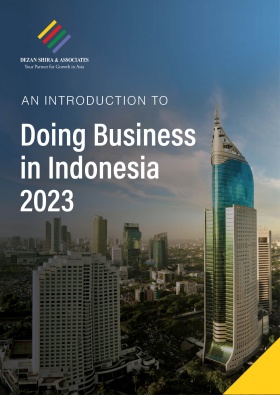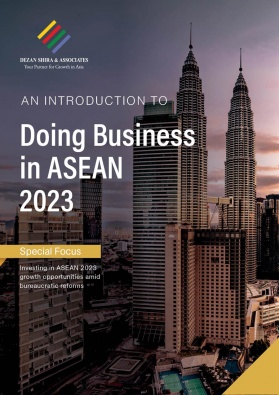Singapore-Australia Trade and Investment: A Strategic Review
We discuss the dynamics of Singapore-Australia trade and investment, covering mineral fuels and oil, property, and emerging sectors like the digital economy and the green transition across multiple industries.
Australia and Singapore have had bilateral relations since 1965 when Australia became the second country to recognize Singapore as an independent nation. The city-state is now Australia’s fifth-largest trading partner with bilateral trade reaching A$59.2 billion (US$38.1 billion) in 2022. Further, Singapore was also the fifth-largest source of foreign direct investment to Australia totaling A$148 billion (US$95.2 billion) in 2022.
Oil and gas dominate trade
Singapore enjoys a trade surplus with Australia having exported some US$16 billion worth of goods in 2022 and importing just over US$4 billion during the same period.
|
Top 10 Singapore Exports to Australia |
|
|
Product |
Value (US$) |
|
Mineral fuels, oils, distillation products |
8.94 billion |
|
Machinery, nuclear reactors, boilers |
1.68 billion |
|
Electrical, electronic equipment |
982 million |
|
Optical, photo, technical, medical apparatus |
668 million |
|
Pearls, precious stones, metals, coins |
643 million |
|
Aircraft, spacecraft |
554 million |
|
Miscellaneous edible preparations |
465 million |
|
Vehicles other than railway, tramway |
279 million |
|
Plastics |
261 million |
|
Essential oils, perfumes, cosmetics, toiletries |
258 million |
Source: Trading Economics
|
Top 10 Singapore Imports from Australia |
|
|
Product |
Value (US$) |
|
Pearls, precious stones, metals, coins |
2.02 billion |
|
Mineral fuels, oils, distillation products |
364 million |
|
Animal, vegetable fats and oils, cleavage products |
281 million |
|
Machinery, nuclear reactors, boilers |
198 million |
|
Meat and edible meat offal |
197 million |
|
Aircraft, spacecraft |
186 million |
|
Dairy products, eggs, honey, edible products |
146 million |
|
Electrical, electronic equipment |
124 million |
|
Optical, photo, technical, medical apparatus |
121 million |
|
Beverages, spirits and vinegar |
106 million |
Source: Trading Economics
Mineral fuels and oil dominate the trade of goods between Singapore and Australia with more than US$10 billion of mineral fuel and distillation was imported from the city-state, or more than 12,800 megaliters in 2022 — Singapore and South Korea supply around half of Australia’s gasoil imports and 80 percent of gasoline purchases.
Singapore is one of the top three global hubs for oil trading and refining, contributing to approximately five percent of GDP. Most oil from the middle east passes through Singapore before going on to large consumers such as China, South Korea, and Japan. The country has a crude oil refining capacity of some 1.5 million barrels per day in addition to being a leading player for high-end floating production, storage and offloading (FPSOs) conversions and jack-up rigs. It is estimated that Singapore handles some 20 percent of the world’s crude oil trading.
Singapore’s investments in Australia’s property sector
Singapore’s investments in Australia are significant. The city-state was the fifth largest source of foreign investment, totaling A$148 billion (US$95.2 billion) in 2022, or 3.3 percent of the total foreign investment in Australia.
Most of these investments are in Australia’s real estate sector and has appealed to Singaporean buyers that are looking to buy second homes or have children heading to Australia for education. Further, Singaporean investors are being lured by a combination of prohibitive taxes on second homes on the island, low interest rates, a strong Singapore dollar, and the promises of high returns on Australian properties.
Singaporean investment in Australian real estate has grown from A$5 billion (US$3.2 billion) to A$9 billion (US$5.7 billion) in 2019, being behind only Chinese investors.
The Singapore-Australia Free Trade Agreement
The Singapore-Australia Free Trade Agreement (SAFTA) is a cornerstone of the economic relationship between Singapore and Australia. SAFTA entered into force in 2003 and has been amended six times, the last in 2020.
The agreement eliminates all tariffs for Singapore exports to Australia and vice versa, in addition to improving access to each other’s markets for the export of services such as education, professional services, and telecommunications, among others.
New investment opportunities
The digital economy
Singapore and Australia signed a digital economy agreement (DEA) in 2020 and was Singapore’s second DEA. DEAs are part of the Singapore government’s strategy to strengthen underlying infrastructure to build up its footprint as a global tech and e-commerce hub, as well as add to the country’s extensive FTA network.
Through a digital-only trade agreement, Singapore aims to develop international frameworks to support businesses engaging in cross-border digital trade and e-commerce. DEAs will encourage greater cooperation in nascent areas, such as artificial intelligence (AI), and facilitate interoperability between digital systems, providing organizations the capacity to trial new technologies across different countries. The digital economy agreement ultimately helps businesses lower the costs of operations and improve access to each other’s markets.
Green economy
Singapore and Australia updated the progress of their Green Economy Agreement (SAGEA) during the 8th Singapore-Australia Annual Leaders’ Meeting in June 2023.
The SAGEA was the world’s first agreement of its kind when it was signed in October 2022. The agreement focuses on promoting trade and investment in environmental goods and services, developing frameworks to support green growth sectors, and catalyzing technology and partnerships to help businesses implement green practices.
Under the agreement, Singapore and Australia will engage in a joint A$20 million (US$13 million) commitment to incentivize and help facilitate Singaporean and Australian companies to collaborate on green trade through the GEA’s Go-Green Co-Innovation Program (GGCIP).
The GGCIP is an essential initiative under the GEA that helps facilitate co-innovation between small and medium-sized enterprises (SMEs) across the two countries. Grants provided under the GGCIP can be used for the development and commercialization of products or services that drive decarbonization in Singapore or Australia.
The grants will be issued to priority green sectors, including:
- Environmental monitoring and assessment;
- Energy-efficient technologies;
- Green transportation and logistics;
- Sustainable agribusiness;
- Renewable energy;
- Sustainable materials; and
- Waste management.
Using Singapore as a base for expansion into Southeast Asia
Ultimately, Singapore is the ideal location for Australian companies looking to expand into Southeast Asia.
As such, a primary advantage of Singapore is its ability to act as a centerpiece for the holding and management of regional assets. Holding companies are a vital component of any international expansion strategy, and Singapore offers investors a stable environment from which to administer operations in more speculative markets in Asia. The city-state has more than 37,000 international companies and 7,000 multinational companies that utilize Singapore as their regional headquarters.
Singapore’s efficient business environment is demonstrated by the ease with which foreign investors can incorporate a business in the country. Registering a company can take as little as one day provided all the files are in order. The minimum paid-up capital is at least S$1 (US$0.73).
About Us
ASEAN Briefing is produced by Dezan Shira & Associates. The firm assists foreign investors throughout Asia and maintains offices throughout ASEAN, including in Singapore, Hanoi, Ho Chi Minh City, and Da Nang in Vietnam, in addition to Jakarta, in Indonesia. We also have partner firms in Malaysia, the Philippines, and Thailand as well as our practices in China and India. Please contact us at asean@dezshira.com or visit our website at www.dezshira.com.







